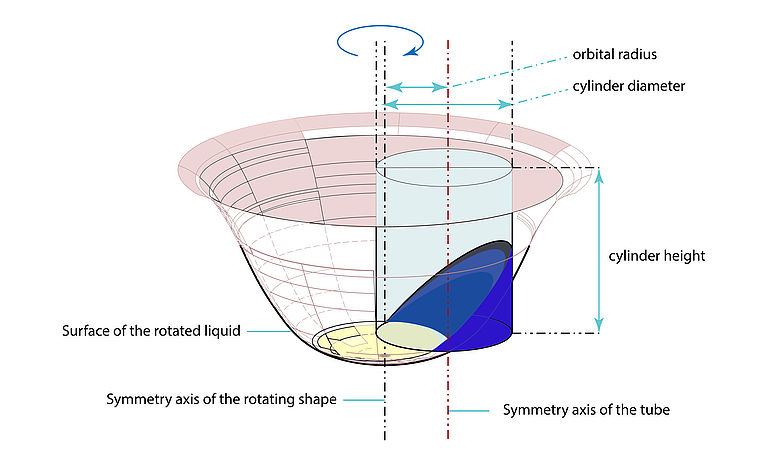Determination of orbital mixing parameters for small volumes under particular consideration of the surface tension
Authored by: Olaf Simmat, Daniel Toro, Alexander Schenk zu Schweinsberg, Andreas Vester
Surface and interfacial tension is a key factor to determine the liquid distribution in small laboratory vessels, frequently used in laboratory automation, under orbital mixing conditions. This concerns in particular vessels with a diameter smaller than 8 mm and microplates with 96 or more wells.
A practically applicable mathematical model was developed to calculate the liquid distribution in a laboratory vessel depending on operation conditions, geometry and further physical parameters with consideration of surface forces. The model enables a time efficient way to calculate optimal operation conditions, in particular mixing speed ω and orbital radius r0.
The developed computational model was examined based on experimental results of studies conducted with orbital shakers of the BioShake® series.
